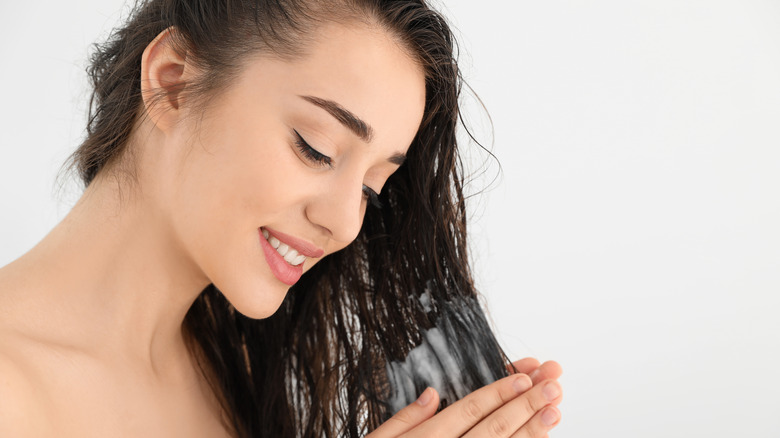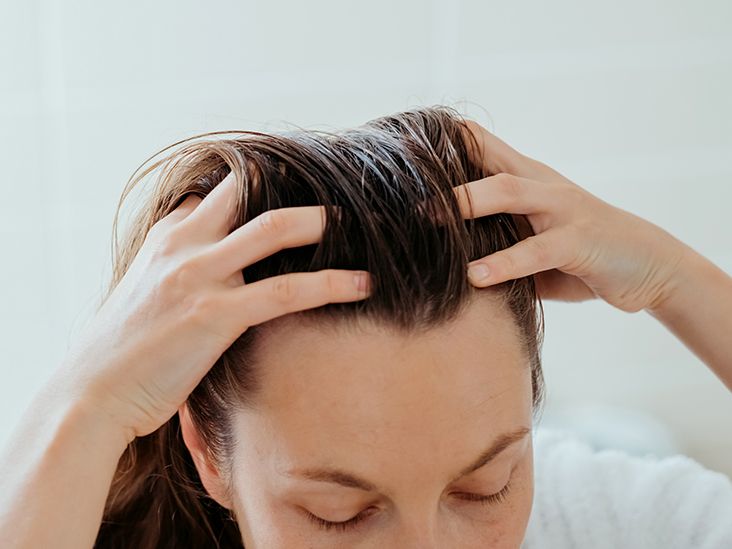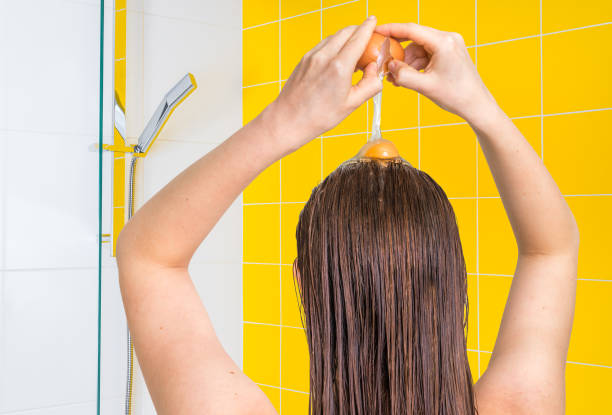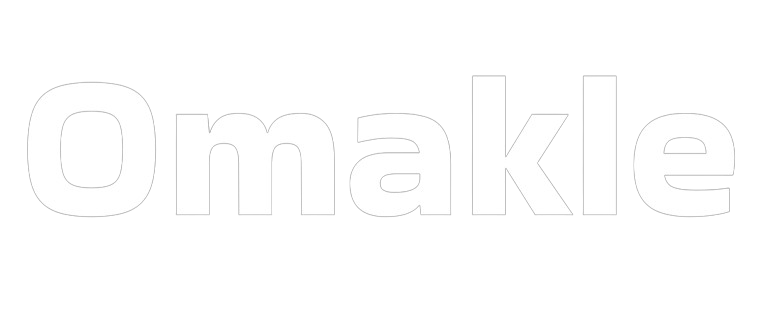
Understanding Hair Hunger
Hair is often considered one of our most defining features. It frames our face, complements our style, and reflects our overall health. But what if your hair is trying to tell you something? Enter the concept of "hair hunger." Just like our bodies crave nutrients, our hair too can hunger for nourishment. Understanding this concept is crucial for maintaining healthy, vibrant locks.
What is Hair Hunger?
Hair hunger refers to the state of deprivation experienced by our hair when it lacks essential nutrients and hydration. This can manifest in various ways, including dryness, dullness, breakage, and lackluster growth. Just like our bodies, our hair requires a balanced diet of nutrients to thrive.
Factors Contributing to Hair Hunger
Several factors contribute to hair hunger, ranging from environmental stressors to lifestyle choices:
- Environmental Factors: Exposure to harsh weather conditions, pollution, and UV radiation can strip the hair of its natural oils and moisture, leaving it parched and brittle.
- Styling Products: Overuse of heat styling tools, chemical treatments, and styling products can weaken the hair's structure and rob it of essential nutrients.
- Poor Nutrition: A diet lacking in essential vitamins, minerals, and proteins can deprive the hair follicles of the nourishment they need to grow strong and healthy.
DIY Hair Treatments to Feed Your Hair
Now that we understand the importance of addressing hair hunger, let's explore some DIY treatments to nourish and revitalize your locks.
1. Nourishing Hair Masks

Also read:- Discover the Power of Ayurvedic Stress Relief
Indulge your hair with luxurious homemade hair masks using natural ingredients like avocado, coconut oil, honey, and yogurt. These ingredients are packed with vitamins, minerals, and fatty acids that nourish and hydrate the hair from root to tip.
- Avocado Hair Mask: Mash one ripe avocado and mix it with two tablespoons of coconut oil. Apply the mixture to damp hair, focusing on the ends. Leave it on for 30 minutes before rinsing thoroughly with lukewarm water.
- Honey and Yogurt Mask: Mix equal parts honey and plain yogurt to create a creamy mask. Apply it evenly to clean, damp hair and leave it on for 20-30 minutes before rinsing.
These nourishing masks will leave your hair feeling soft, silky, and rejuvenated.
2. Scalp Massage with Essential Oils

Treat your scalp to a soothing massage using essential oils known for their hair-stimulating properties. Rosemary, peppermint, and lavender are particularly beneficial for promoting blood circulation, stimulating hair follicles, and encouraging healthy hair growth.
- Rosemary Scalp Massage: Dilute a few drops of rosemary essential oil with a carrier oil like coconut or jojoba oil. Gently massage the oil into your scalp using circular motions for 5-10 minutes. Leave it on for an additional 30 minutes before shampooing as usual.
- Peppermint Scalp Treatment: Mix peppermint essential oil with a carrier oil and massage it into your scalp. The cooling sensation of peppermint will invigorate your scalp and leave your hair feeling refreshed.
Regular scalp massages with essential oils can help nourish the scalp, improve circulation, and promote overall hair health.
3. DIY Protein Treatments

Restore strength and elasticity to your hair with DIY protein treatments. Protein is essential for repairing damaged hair and preventing breakage. Eggs, yogurt, and mayonnaise are rich sources of protein and can be easily incorporated into your hair care routine.
- Egg Hair Mask: Beat two eggs and mix them with a tablespoon of olive oil. Apply the mixture to clean, damp hair and leave it on for 20-30 minutes before rinsing with cool water.
- Yogurt and Honey Treatment: Combine plain yogurt with honey to create a protein-rich hair mask. Apply it to your hair and let it sit for 30 minutes before rinsing thoroughly.
These protein treatments will help strengthen your hair from within, leaving it resilient and less prone to damage.
4. Herbal Rinse for Shine and Vitality
Enhance the shine and vitality of your hair with herbal rinses. Herbs like rosemary, chamomile, and nettle are known for their hair-enhancing properties and can be brewed into nourishing hair rinses.
- Rosemary Rinse: Steep a handful of fresh rosemary sprigs in hot water for 30 minutes. Strain the mixture and use it as a final rinse after shampooing. Rosemary helps stimulate hair growth and adds shine to dull locks.
- Chamomile Rinse: Brew chamomile tea and allow it to cool. Use it as a final rinse to brighten blonde hair and soothe the scalp.
Incorporating herbal rinses into your hair care routine will leave your hair looking and feeling healthier with each use.
Conclusion
In conclusion, addressing hair hunger is essential for maintaining healthy, vibrant locks. By nourishing your hair with DIY treatments like nourishing hair masks, scalp massages with essential oils, protein treatments, and herbal rinses, you can feed your hair the nutrients it craves. So why wait? Treat your hair to some TLC today and watch it flourish with newfound vitality and shine.
FAQs
Q: How often should I use these DIY hair treatments?
A: It depends on your hair type and condition. Generally, you can use hair masks and protein treatments once a week, while scalp massages and herbal rinses can be done 2-3 times a week for best results.
Q: Can I leave the hair masks on overnight for better results?
A: While leaving hair masks on overnight may seem tempting, it's not always necessary. Most DIY hair masks are designed to be left on for 20-30 minutes to allow the ingredients to penetrate the hair shaft. Leaving them on overnight may not necessarily yield better results and could lead to product buildup.
Q: Are these DIY treatments suitable for all hair types?
A: Yes, the majority of these DIY treatments are suitable for all hair types, including dry, oily, curly, and straight hair. However, it's always a good idea to patch test new ingredients to ensure you don't have any adverse reactions.
Q: Can I customize these treatments based on my specific hair concerns?
A: Absolutely! One of the benefits of DIY hair treatments is that you can customize them to address your specific hair concerns. For example, if you have dry scalp, you can add extra moisturizing ingredients to your hair masks or focus on scalp massages with oils known for their hydrating properties.
Q: How long will it take to see results from these DIY treatments?
A: Results may vary depending on the condition of your hair and how consistently you use the treatments. Some people may notice improvements in hair texture and shine after just a few uses, while others may require more time to see significant changes. Consistency is key, so be patient and stick to a regular hair care routine.
Q: Can I use store-bought products instead of DIY treatments?
A: While store-bought hair care products can be effective, DIY treatments offer the advantage of using natural ingredients without any harsh chemicals or preservatives. Plus, they're often more cost-effective and customizable to your specific needs. However, feel free to incorporate both DIY and store-bought products into your hair care routine for optimal results.
Q: Are there any side effects or risks associated with these DIY treatments?
A: In general, DIY hair treatments using natural ingredients are safe for most people. However, if you have allergies or sensitivities to certain ingredients, it's important to perform a patch test before using the treatments on your hair and scalp. Additionally, be cautious when using essential oils, as some can be irritating if not properly diluted.
Q: Can these treatments help with hair loss or balding?
A: While these DIY treatments can help improve the overall health and appearance of your hair, they may not necessarily prevent or reverse hair loss or balding caused by genetic factors or medical conditions. If you're experiencing significant hair loss, it's best to consult a healthcare professional for personalized advice and treatment options.
Q: How long do the effects of these DIY treatments last?
A: The effects of DIY hair treatments can vary depending on factors such as hair type, environmental conditions, and lifestyle habits. Generally, you can expect the benefits to last until your next wash or treatment application. For long-term results, consistency is key, so incorporate these treatments into your regular hair care routine for sustained benefits.
Q: Can men use these DIY hair treatments too?
A: Absolutely! These DIY hair treatments are suitable for both men and women looking to improve the health and appearance of their hair. Whether you have short or long hair, curly or straight, these treatments can help nourish and revitalize your locks for healthier-looking hair overall.


0 Comments